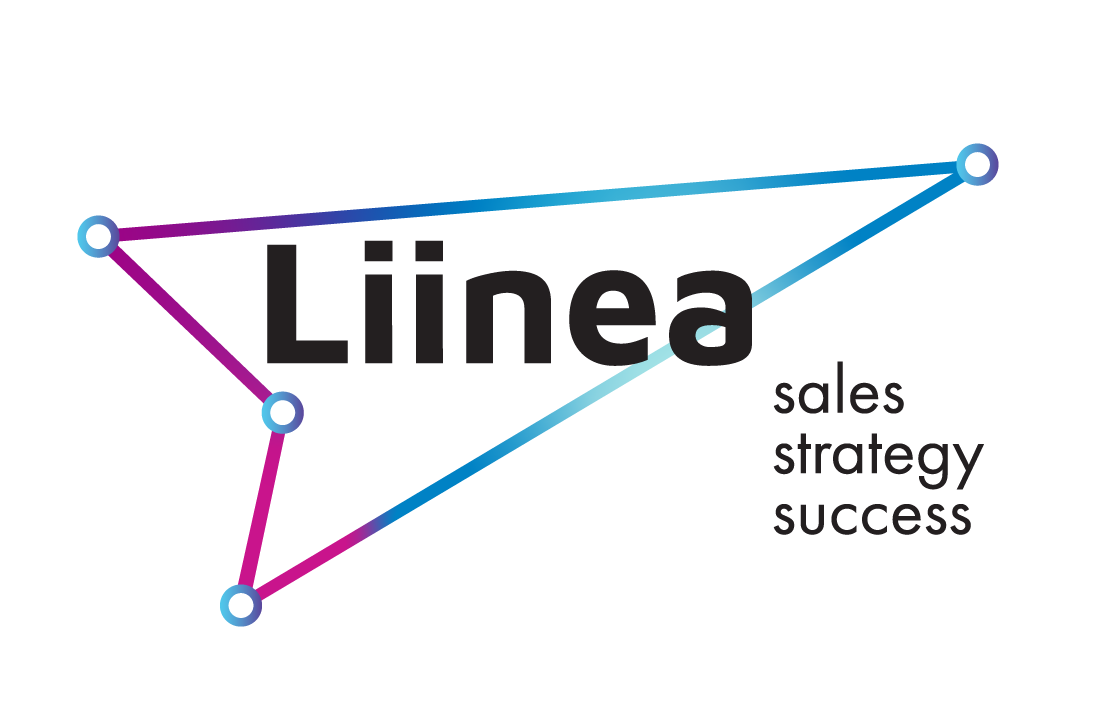Karina Collis
the science behind cold emails that work
PART 3 - Follow up strategy and four follow up templates
By Karina Collis, May 2020
Scroll down to find four follow up templates
Hello again ! In the first part of "The science behind cold emails that work" we talked about how to structure a cold email. The second part focused on "Call to action that moves". Today we are discussing how to follow up to harvest the fruits of your work.
By now, you sent many cold emails to people you identified as good prospects. If you did some research on the prospects, personalised your email and tried to offer help and insights as opposed to just sell, your email may have sparked some attention but no action just yet.
How many times a day do you receive emails for products and services that make absolutely no sense for you ? But if you did receive an email about an interesting fact relating to what you do, or simply a email from someone who understands who you are, you will likely remember. And think that this sounds relevant although not necessarily actionable.
How many times a day do you receive emails for products and services that make absolutely no sense for you ? But if you did receive an email about an interesting fact relating to what you do, or simply a email from someone who understands who you are, you will likely remember. And think that this sounds relevant although not necessarily actionable.
In these COVID-19 times, many companies have bent over backwards to help their prospects by sharing insights and providing guidance and experience from their communities. So although COVID-19 related emails were perhaps less tailored, they clearly offered a helpful action and many more people responded to offers of zoom webinars than ever before.
What if, after spending time learning about a prospect, the decision-makers and their interests and challenges, after sending a well thought through email you received nothing in reply?
We are going to talk about how to design a follow up strategy that will maximise chances of a response and eventually provide you with the return on time and effort invested you are so keenly looking for.
When sending a cold email, it would be wrong to assume that your prospect will:
- receive it at the right time
- find it valuable, and
- reply to you immediately
Given what we know about Murphy's law, your email will likely go straight to spam, will never be opened or opened at completely the wrong time, making the content of your email misunderstood or unimportant or irrelevant. Statistics don't play in your favour. Only 24% of sales emails are opened and only 1-3% receive a response.
But you have already invested your time and it is not the moment to give up.
Since b2b sales is very much a people-to-people business, where relationships are a priority, the best way to lay a first stone into the foundation of your future relationship is to follow up with a call.
- receive it at the right time
- find it valuable, and
- reply to you immediately
Given what we know about Murphy's law, your email will likely go straight to spam, will never be opened or opened at completely the wrong time, making the content of your email misunderstood or unimportant or irrelevant. Statistics don't play in your favour. Only 24% of sales emails are opened and only 1-3% receive a response.
But you have already invested your time and it is not the moment to give up.
Since b2b sales is very much a people-to-people business, where relationships are a priority, the best way to lay a first stone into the foundation of your future relationship is to follow up with a call.

The best follow up is a CALL
A 2017 study published in the Journal of Experimental Social Psychology found that an in-person request is 34 times more successful than email.
85% of professionals say they build stronger and more meaningful business relationships during phone calls compared with email exchanges.
A 2017 study published in the Journal of Experimental Social Psychology found that an in-person request is 34 times more successful than email.
85% of professionals say they build stronger and more meaningful business relationships during phone calls compared with email exchanges.
A call is a powerful tool to build a relationship.
A call is a powerful tool to build a relationship. It allows you to give and get more information. It saves steps in the process as it allows to discuss and arrange a follow up call faster.
So next time you want to follow up on your first cold email, just pick up the phone and dial your prospect. It is extremely easy to start a conversation by saying:
"Hi [Name], this is [your name] from [your company name].
I am calling to follow up on my email about...Have you had a chance to read it? In brief, we help company do ...., and I thought to give you a quick call instead of troubling you via email, to find out if it makes sense for us to connect to discuss..."
I need to warn you here. It is not easy to reach someone on the phone without pre-arranging a call. It takes an average of 8 cold call attempts to reach a prospect, but it will eventually pay off!
But what if you don't have a phone number? Or the only number your have is a customer support that is not entitled to connect incoming calls, suggesting to send an email instead? In this case the best available option is continue following up digitally.
So next time you want to follow up on your first cold email, just pick up the phone and dial your prospect. It is extremely easy to start a conversation by saying:
"Hi [Name], this is [your name] from [your company name].
I am calling to follow up on my email about...Have you had a chance to read it? In brief, we help company do ...., and I thought to give you a quick call instead of troubling you via email, to find out if it makes sense for us to connect to discuss..."
I need to warn you here. It is not easy to reach someone on the phone without pre-arranging a call. It takes an average of 8 cold call attempts to reach a prospect, but it will eventually pay off!
But what if you don't have a phone number? Or the only number your have is a customer support that is not entitled to connect incoming calls, suggesting to send an email instead? In this case the best available option is continue following up digitally.
Four key principles of following up with email
1
No follow up without value add
Always include some information, either a brief summary of what you are emailing about, or some useful facts, files etc: "As a reminder, we work with companies in [name of your sector], helping to save/improve/reduce..." Never just ask for a response without repeating who you are and what is in it for the recipient.
2
Follow up with an offer
Or build up on the information in the first email. For example your first email could be in an informative style, while the second one would explain the offer and include a clear call for action, e.g. "In case you are interested, would you be open to have a discovery call next Monday?"
3
Follow up 3-4 times
The majority of recipients respond the second or third time. Not only there is a high chance that your first email comes at the wrong time, it gives some time to the prospect to think about the value vs the needs. You can always confirm if your counterpart is interested or not, for example by saying "if you would rather not receive future messages about this, kindly reply No"
4
Personalise your follow-ups
Like with your first cold email, all your follow-ups should be personalised. This can be achieved in many ways, for example by referring to posts made by your prospect or any news issued by the company.
let's discuss these principles in greater details
Principle 1. No follow up without value add
The Role of A B2B salesperson is to provoke people with new ideas, so they become dissatisfied with the status quo AS THEY gain a vision of tomorrow.
• Share insights
• Share articles/research from reliable sources etc
• Add a link to a testimonial, video, case studies (but not a company presentation), use photos, infographics, banners
• Run your own survey and share it with your prospects

Principle 2. Follow up with an offer
Don't use an offer in your first email because there is no established trust. An offer in a follow up with get a higher response rate. On the right is an example of a follow-up email that Saastr sent me some time ago, that read like a personalised email with a clear offer. (Sadly, this event will not be held in Paris this year, but I will still enjoy it online!)
But you don't need to have a special offer up your sleeve to send a follow up email. If the first email contained information about your product, the second email can simply contain a more concrete call to action, as simple as "What would be a good time for a quick intro chat next Tuesday?".
But you don't need to have a special offer up your sleeve to send a follow up email. If the first email contained information about your product, the second email can simply contain a more concrete call to action, as simple as "What would be a good time for a quick intro chat next Tuesday?".

Principle 3. Follow up 3-4 times
Assume your first follow-up message ends as poorly as your introductory email may have. I came across the following statistics:
- 44% of salespeople give up after one follow-up
- The average sales rep only makes 2 attempts to reach a prospect (source)
I know that many of my respectful colleagues advise to follow up five and even six and seven times. I have a different opinion.

Why it doesn't make sense to follow up more than 4-5 times?
Principle of consistency
" Once people make a decision, take a stand or perform an action, they will face an interpersonal pressure to behave in a manner consistent with what they have said or done previously".
Influence: Science and Practice, Robert Cialdini
" Once people make a decision, take a stand or perform an action, they will face an interpersonal pressure to behave in a manner consistent with what they have said or done previously".
Influence: Science and Practice, Robert Cialdini
There is a very fine line between following up while adding value and annoying the recipient. If there is no feedback after FOUR emails, it might be that your prospect doesn't need your solution, whether now or later. According to Robert Cialdini, the author of the book that has become a must read for all the marketers and those who want to master the art of persuasion, once someone has made up his or her mind, he or she will be consistent in the behaviour that follows the decision. It means that if your prospect decided to proactively ignore your messages, he will ignore them even if you send 100 of them (please don't try this).
Let's look at en example of a well structured follow up strategy
The following example is from Growthonics, a B2B lead generation company. I did not become a customer but thought their email campaign worked well.
1st email
• Clear structure
• Mentioning some of my colleagues by name
• Credibility through mentioning some of their clients' names
• Clear call to action
• Option to opt out from receiving future messages
• Clear structure
• Mentioning some of my colleagues by name
• Credibility through mentioning some of their clients' names
• Clear call to action
• Option to opt out from receiving future messages

1st follow up
• Clear statement of the benefit
• Reminder of what they offer
• Question about the right decision makers
• Option to opt out from receiving future messages
• Clear statement of the benefit
• Reminder of what they offer
• Question about the right decision makers
• Option to opt out from receiving future messages

2nd follow up
• Extra information about the service
• Raising curiosity
• Question about the right decision makers
• Option to opt out from receiving future messages
• Extra information about the service
• Raising curiosity
• Question about the right decision makers
• Option to opt out from receiving future messages

How many emails did I receive in total?
First email + 4 follow ups over 5 weeks.
First email + 4 follow ups over 5 weeks.

What could have been done better in this emailing campaign ?
Personalisation. While it did better than most, I still felt that it was an automated email sent to many other people. I didn't feel guilty for not replying.
If a sales rep called me to establish a personal connection, I might have become their client by now.
Personalisation. While it did better than most, I still felt that it was an automated email sent to many other people. I didn't feel guilty for not replying.
If a sales rep called me to establish a personal connection, I might have become their client by now.
To conclude
Follow-ups are about value-add, personalisation and perseverance and you should apply as much thought to the follow-up as you applied to the initial email. Another great way to follow-up is simply with a call.
Your special bonus: four follow-up email templates
As a bonus, I put together a few follow up templates that will help you create your own follow up campaign:
1st follow up
Hi [...],
I reached out to you last week (see email below) and I just wanted to follow up.
As a reminder, we work with [activity/industry] companies such as [your prospect's company name], helping them to [....], to achieve better [....]
Do you already have a [engaging question]?
Our research shows that [why it is important to have].
Would you be interested in learning how we can support your [....]? It will only take only a 10-minute call to determine if we can help. What time on [specific day] can we talk?
Best Regards,
2nd follow up
Hi [...],
This is […] from [...]
Do you have a moment to talk about how we can support [...]?
As mentioned before, we work with [...] doing [...] .
Here is a link to a [case study/article/webcast] which will show you how our solution has been helpful to [other clients].
If you find this to relevant, please let me know what time would suit for a 15 minute call next [week day] .
Best Regards,
3rd follow up
Hi [...],
I sent you a few of emails over the past [...] weeks regarding [your offer].
Although I did't hear back from you, I thought I'd give it one more try. I think our [product/service] can help you [...]
In short, we [value proposition].
You can find more information on www.xxx.com
Can we have a brief call so I can take you through one of our customer case studies? What would be a good day/time to talk ?
Best Regards,
4th follow up
Hi [..],
This is […] from [...] .We support [...], providing them with [...]
I guess that my previous emails reached you at the wrong time. I just wanted to ask if you would like me to follow up in a month or two? Just kindly reply in how many weeks I should ping you again.
Best Regards,
1st follow up
Hi [...],
I reached out to you last week (see email below) and I just wanted to follow up.
As a reminder, we work with [activity/industry] companies such as [your prospect's company name], helping them to [....], to achieve better [....]
Do you already have a [engaging question]?
Our research shows that [why it is important to have].
Would you be interested in learning how we can support your [....]? It will only take only a 10-minute call to determine if we can help. What time on [specific day] can we talk?
Best Regards,
2nd follow up
Hi [...],
This is […] from [...]
Do you have a moment to talk about how we can support [...]?
As mentioned before, we work with [...] doing [...] .
Here is a link to a [case study/article/webcast] which will show you how our solution has been helpful to [other clients].
If you find this to relevant, please let me know what time would suit for a 15 minute call next [week day] .
Best Regards,
3rd follow up
Hi [...],
I sent you a few of emails over the past [...] weeks regarding [your offer].
Although I did't hear back from you, I thought I'd give it one more try. I think our [product/service] can help you [...]
In short, we [value proposition].
You can find more information on www.xxx.com
Can we have a brief call so I can take you through one of our customer case studies? What would be a good day/time to talk ?
Best Regards,
4th follow up
Hi [..],
This is […] from [...] .We support [...], providing them with [...]
I guess that my previous emails reached you at the wrong time. I just wanted to ask if you would like me to follow up in a month or two? Just kindly reply in how many weeks I should ping you again.
Best Regards,

My final advice
There is no silver bullet. The only way to find out what works for your company is to experiment.
Be creative!
Write more!
Use more creativity and less templates picked up on the Internet, because no one is interested in receiving another email that "sounds like a broken record"
There is no silver bullet. The only way to find out what works for your company is to experiment.
- Start from 5 cold emails templates
- Send each to 10 different prospects (don't forget to personalise, don't send a generic email!)
- Cold call and don't give up
- Measure the success rate
Be creative!
Write more!
Use more creativity and less templates picked up on the Internet, because no one is interested in receiving another email that "sounds like a broken record"
by Karina Collis | May 2020
As a special thank you for reading my article,
I offer to review your cold email template personally
as part of your free sales consultation
I offer to review your cold email template personally
as part of your free sales consultation
Arrange now >>>

Karina Collis
In my Liinea sales coaching workshops, I work with founders , VP of Sales and sales teams, helping them get to optimised sales processes that result in sales that close faster. If you are looking to scale up and accelerate your sales, contact me at karina@liinea.com





